Photography by hannah C brown
Crossway’s Personal Reference Bible is a hand-size Bible that creates a nice balance between size and usefulness. It includes the 2011 edition of the ESV and most of the tools you’d expect to see in a reference Bible. I’m reviewing the black TruTone edition. It’s available in many colors, styles, and materials including hardcover, cloth over board, TruTone, genuine leather, and top grain leather.
Binding
This edition is black TruTone. It includes a thick black paper liner, perimeter stitching, a sewn binding, and a single black ribbon. The cover has a textured grain that looks amazing. It lies open with no issues after it’s broken in. Until then it doesn’t want to lie open in Genesis. The overall size is 7.75 x 5.5 x 1.25. This is an easy Bible to carry and hold in one hand for reading and study.
Paper
I’m guessing the paper to be low to mid 30’s in gsm. It’s white and has an average opacity. There are a few places where the show-through can be a little distracting but it isn’t bad enough to keep me from using it. It’s really only noticeable in the poetic settings. I didn’t have any issues when trying to turn pages.
Typography
The text is presented in a single-column paragraph with references in the inner margin and footnotes in the footer. Poetry is set in stanzas.
The font is a consistent black letter with a medium weight coming in at maybe 7.5 point. It has lots of space between the lines to help readability. Reference and footnotes keys are small enough to not get in the way and verse numbers are large enough to stand out, making the verses easier to find.
The columns are 3 5/8” wide and have around 80 characters across and around 14 words per line. This makes some pretty poetic settings. Normally a column with this many characters would give me trouble reading but since the references are in the inner margin the text is mostly on a flat page, so there’s no bending into the inner margin.
Section headings are in italics. They have a good balance of being useful and easy enough to see but at the same time not getting in the way or standing out too much. The header contains the book name, chapter, and verse in the outer corner, and the page number in the middle. This works well for finding verses easily.
References aren’t next to the verses. They’re in the inner column with no spaces, leaving the rest of the inner margin empty. They’re still easy enough to find because they’re labeled well. They show the chapter number for the first verse and then the verse numbers for all references. One thing that stands out to me though is if there are too many for the inner margin the rest are placed under the text just above the footnotes. This is fine, but it is one more place you have to look.
References
References are placed in the inner column and are keyed to the text with letters.
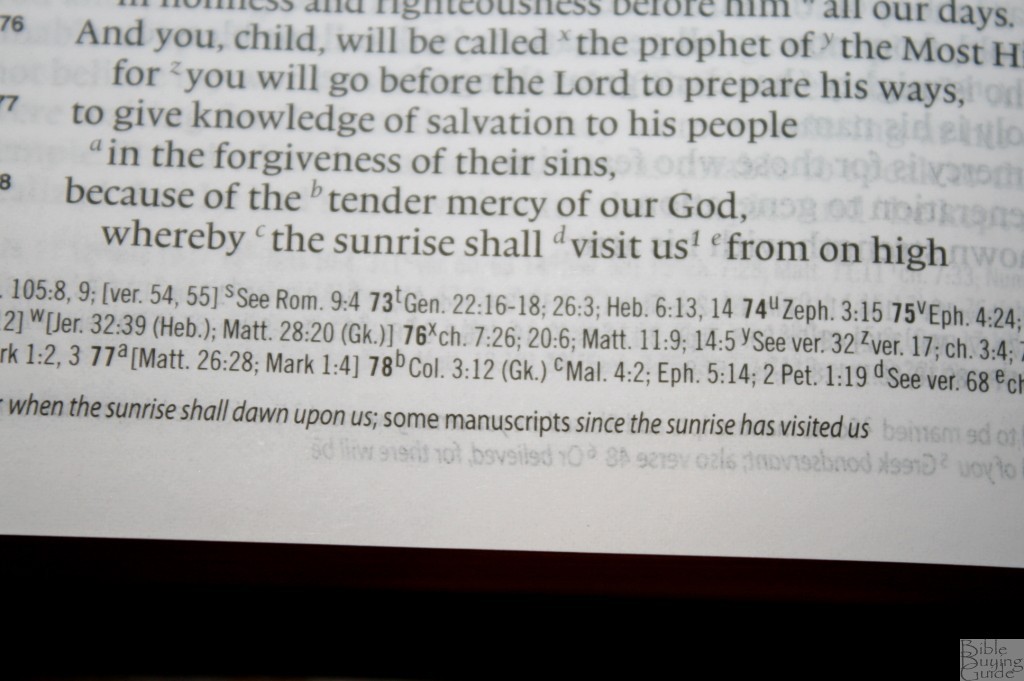
Here are some examples:
- Genesis 1:1 – Job 3:4-7; Ps 33:6; 136:5: Isa 42:5; 18; Jn 1:1-3; Acts 14:15; 17:24; Col 1:16; Heb 1:1; 11:3; Rev 4:11
- Matthew 17:20 – Jn 11:40; Mt 6:30; 21:21, 22; Mk 11:23; Lk 17:6; Mt 13:31; ver 9; 1 Cor 13:2; Mk 9:23
- Mark 11:23 – Mt 17:20; Ps 46:2; 1 Cor 13:2; Rev 8:8; Rom 4:2; 14:23; Jm 1:6; Mk 16:17; Jn 14:12
- John 1:1 – Gen 1:1; Col 1:17; 1 Jn 1:1; Rev 1:4, 8, 17; 3:14; 21:6; 22:13; Rev 19:13; Heb 4:12; 1 Jn 1:1; 1:2; Jn 17:5; Phil 2:6
- 1 John 1:1 – Jn 1:1; 1 Jn 2:13, 14; Ac 4:20; Jn 19:35; 1 Jn 1:14; 2 Pet 1:16; Lk 24:39; Jn 20:27
There seem to be enough references to be a good help for study.
Footnotes
Footnotes are placed in the footer. I like that they’re placed separately from the references because it makes them much easier to find. They’re keyed to the verses with numbers.
Footnotes include information such as alternate renderings, manuscript variations, parallel passages, weights and measures, Greek and Hebrew explanations, alternate names and spellings, and explanations where needed. They’re great for shedding light on the text and are helpful for reading and studying.
Table of Weights and Measures
This is a single page that gives the biblical unit, approximate American and metric equivalents, and biblical equivalent. It contains 22 weights and measures. They’re also found in the footnotes.
Concordance
The concordance is 44 pages with three columns per page. It’s a good concordance for basic study. Here are a few entries with their counts:
- Christ – 18
- Christ’s – 3
- Christian – 2
- Christians – 1
- Faith – 21
- Faithful – 12
- Faithfully – 3
- Faithfulness – 6
- Faithless – 3
- God – 57
- Godliness – 3
- Godly – 3
- Gods – 3
- Praise – 10
- Praising – 3
- Pray – 8
- Prayer – 7
- Praying – 5
If I Could Change One Thing
The only thing that’s missing from this little gem is maps. I would like to see them added. Maps would make it feel more complete and would allow it to compete with other reference editions such as the Clarion and Pitt Minion.
Conclusion
Crossway’s Personal Reference Bible is a handy little ESV that packs a punch. It has a great layout for reading, enough tools for good study, and is the perfect size for carrying. The only thing missing is maps. If you have no issues reading smaller print then this is an excellent Bible for general use. I highly recommend it.
Do you have or plan to get a Personal Reference Bible? Tell us what you think!
Crossway provided this Bible free for review. I was not required to give a positive review – only an honest review. My opinions are my own.

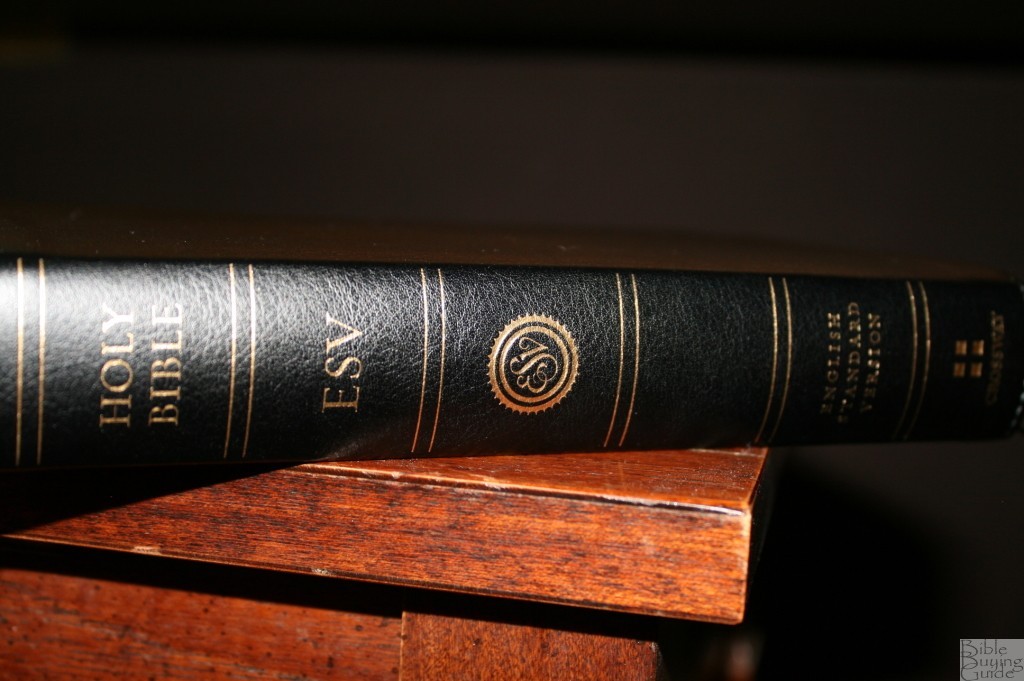
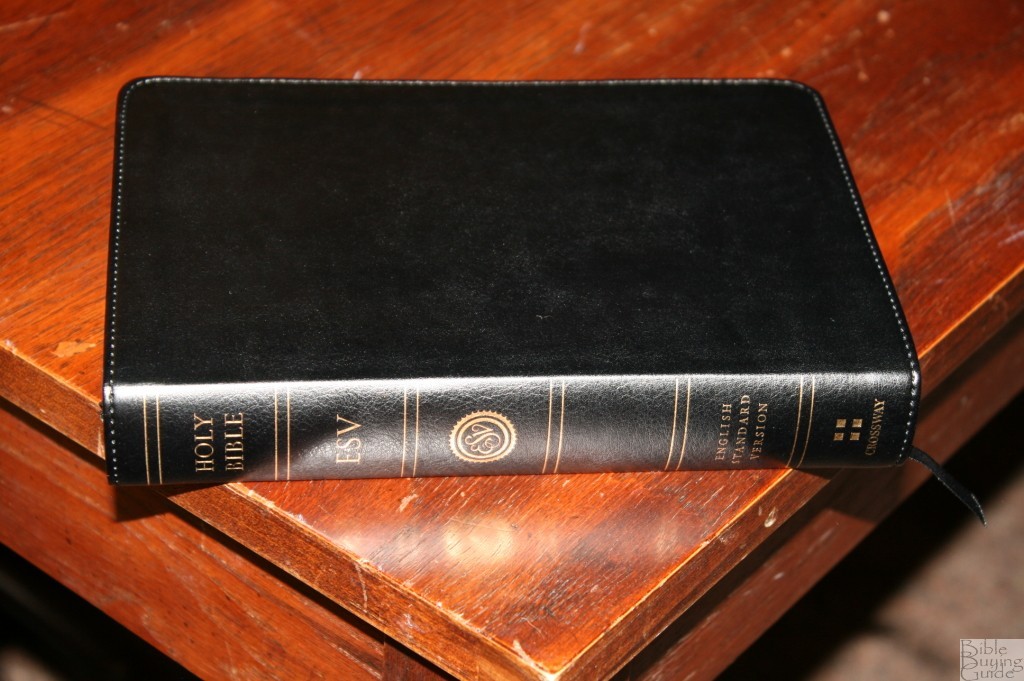
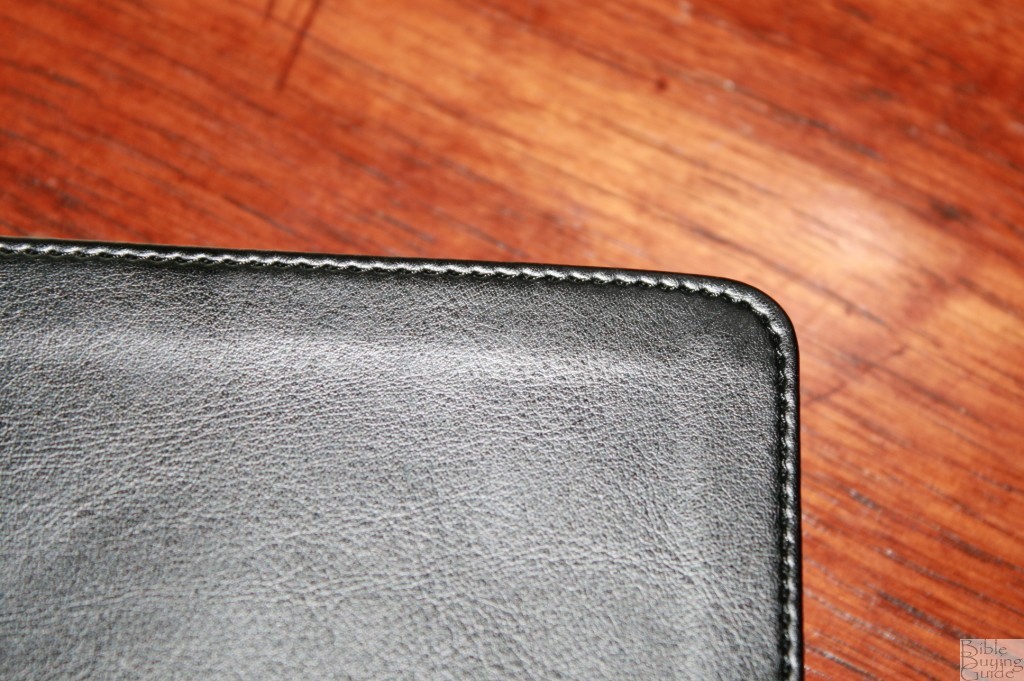

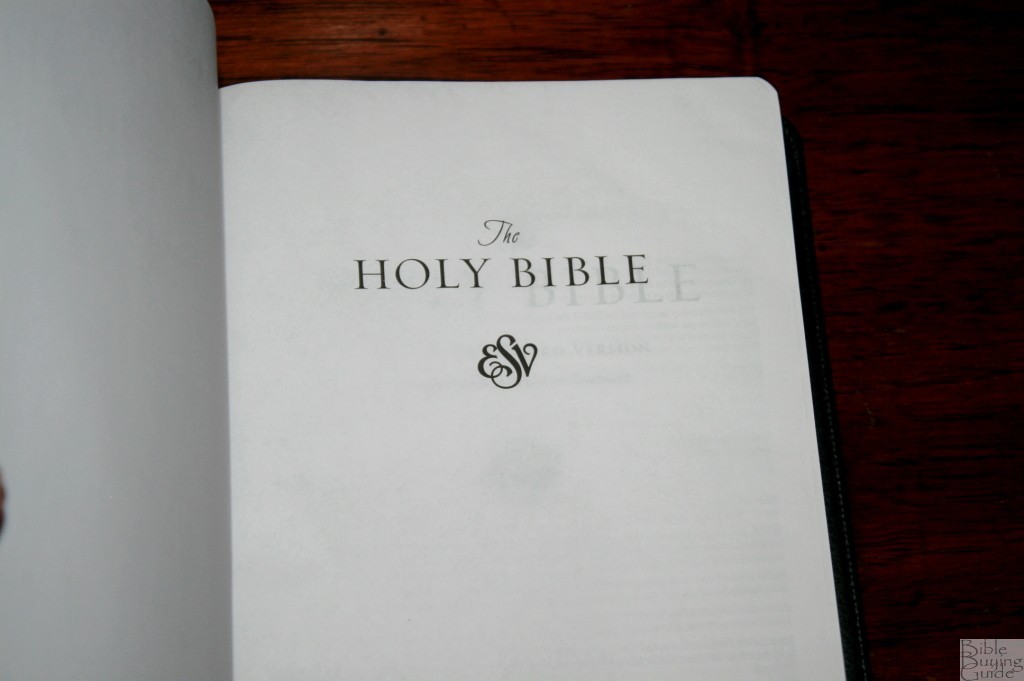
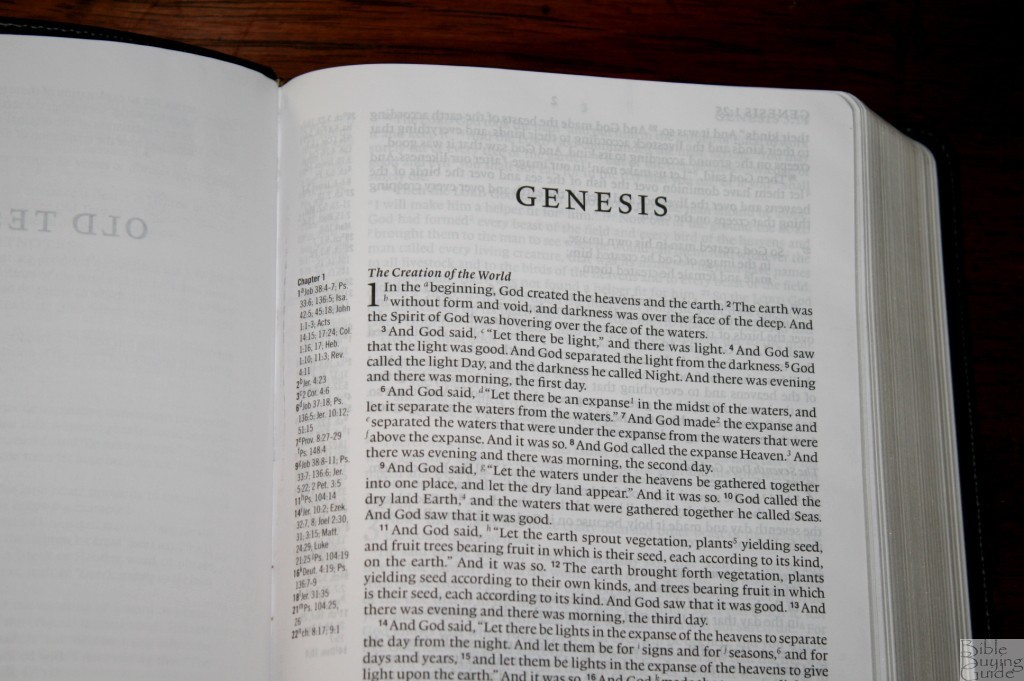
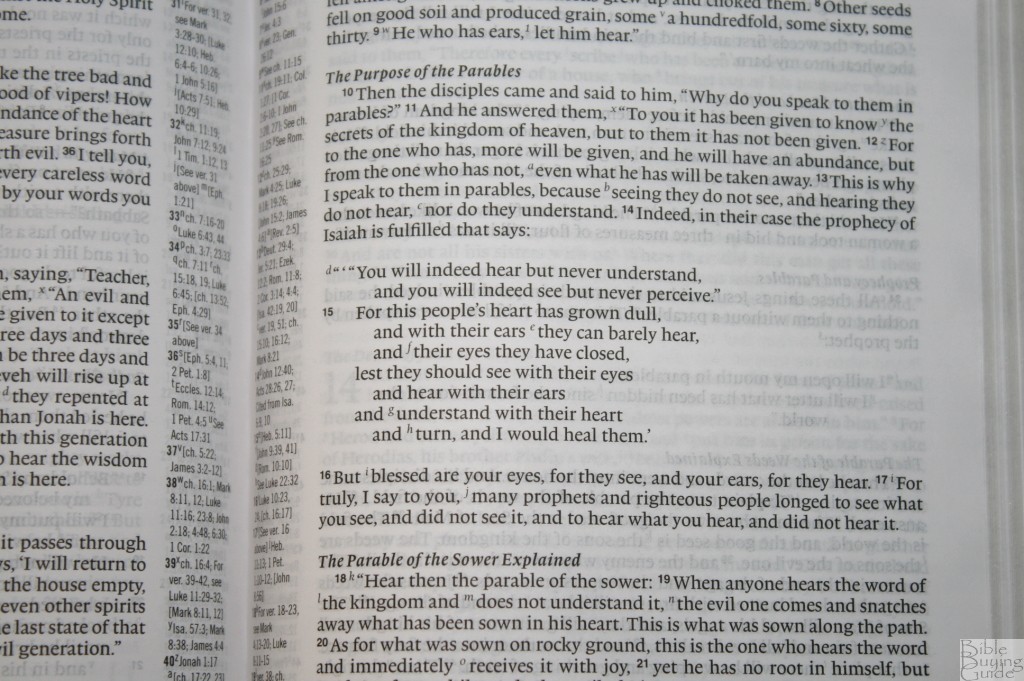
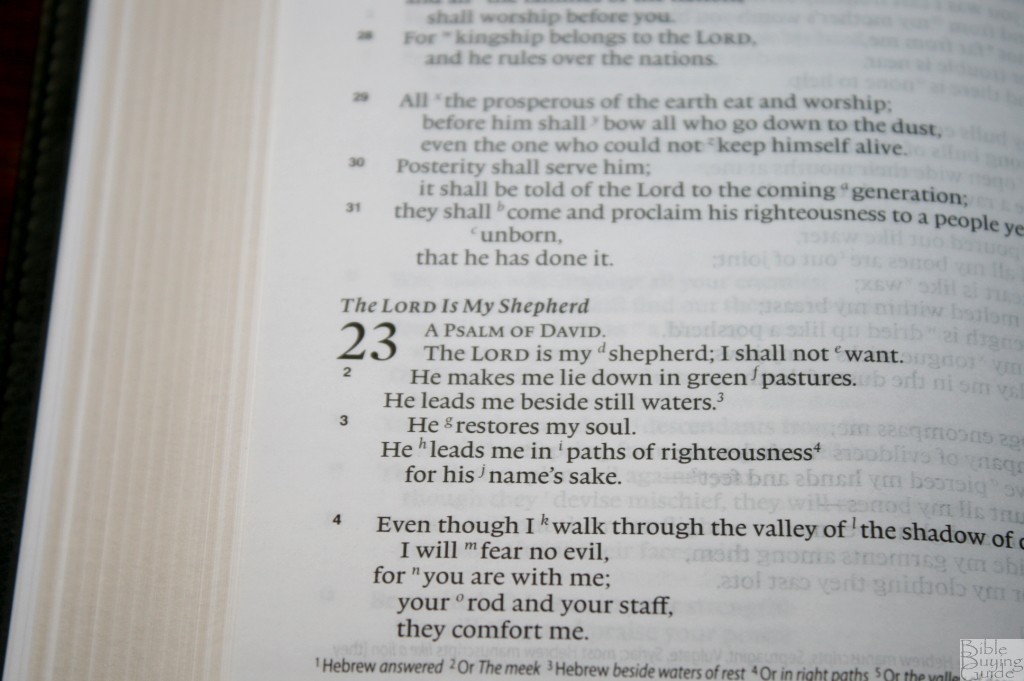
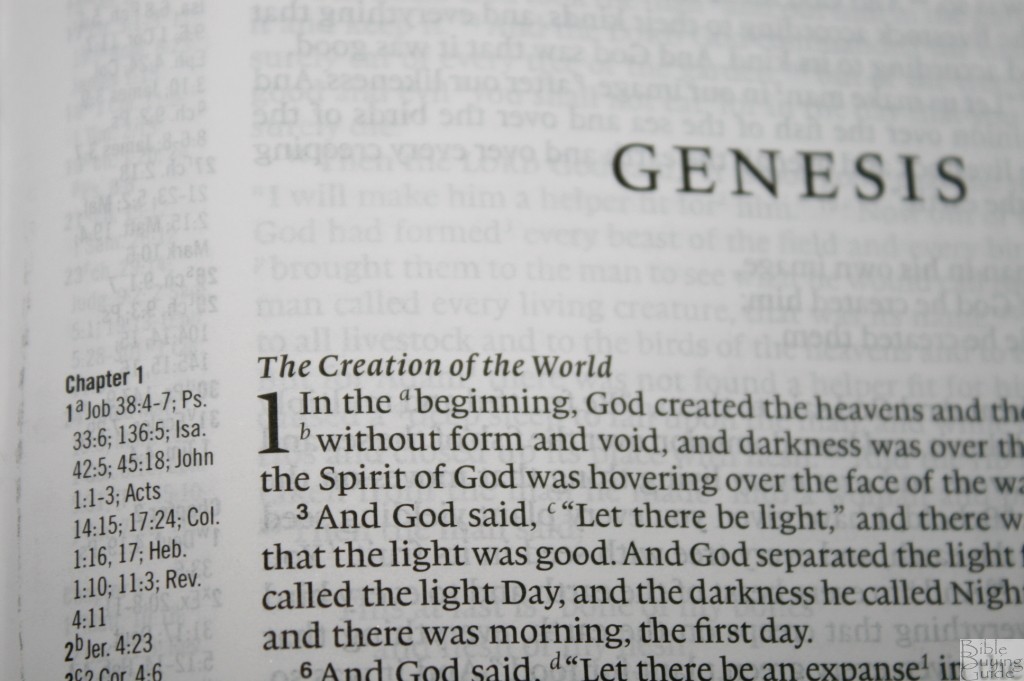
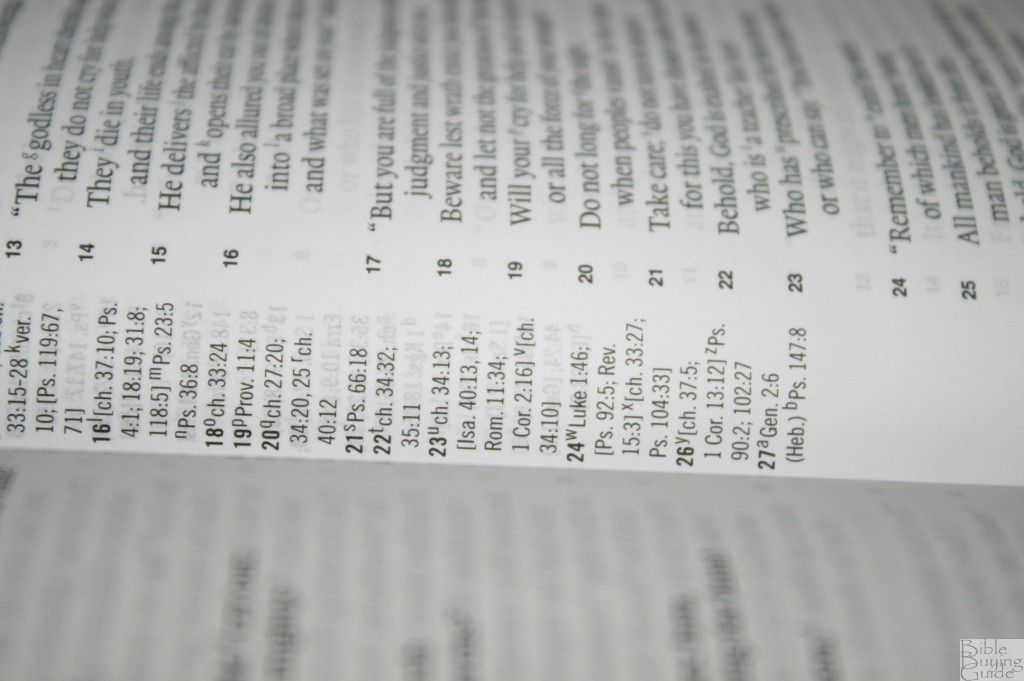

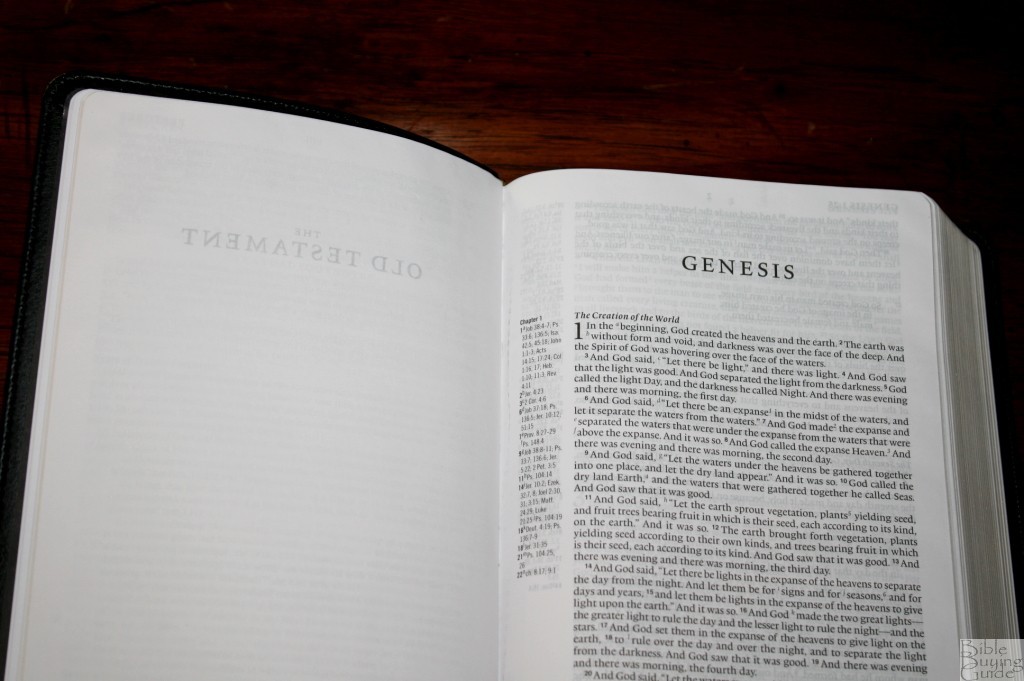
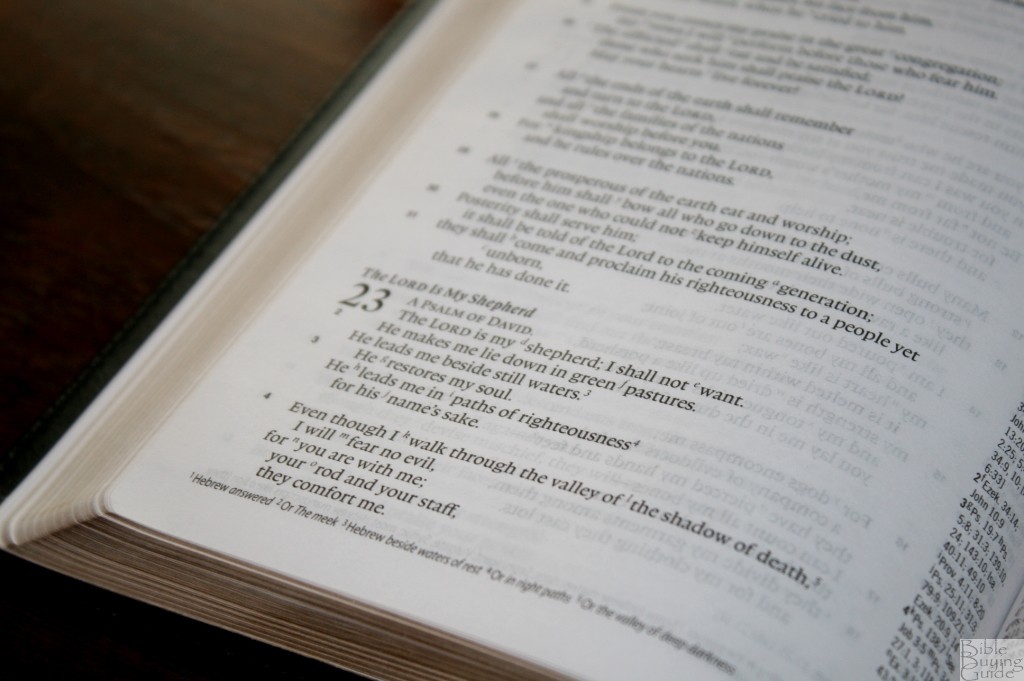


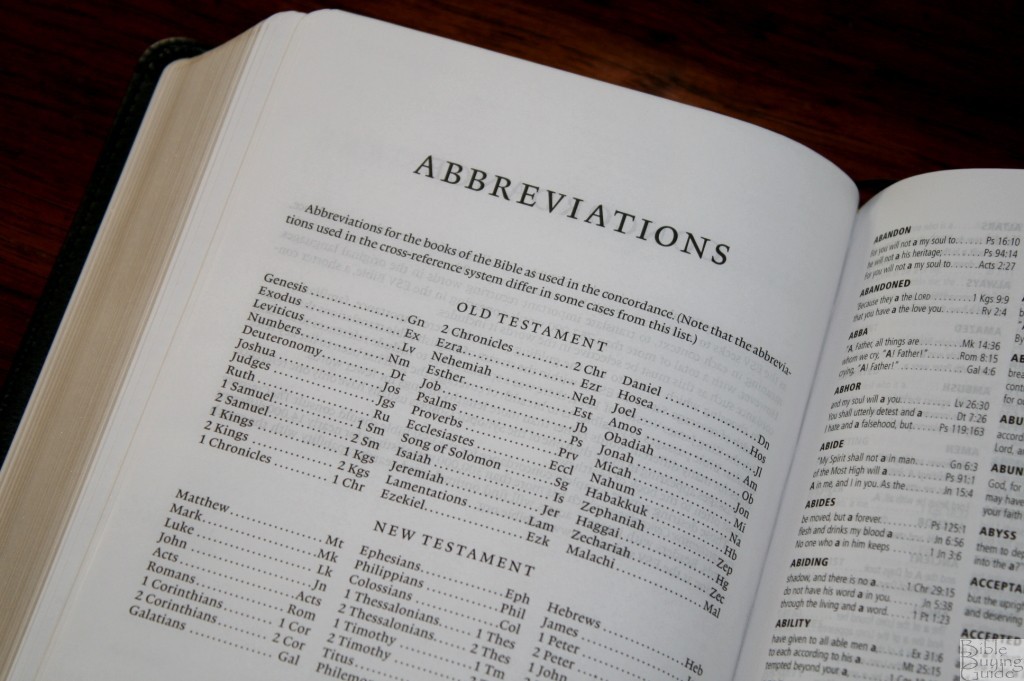
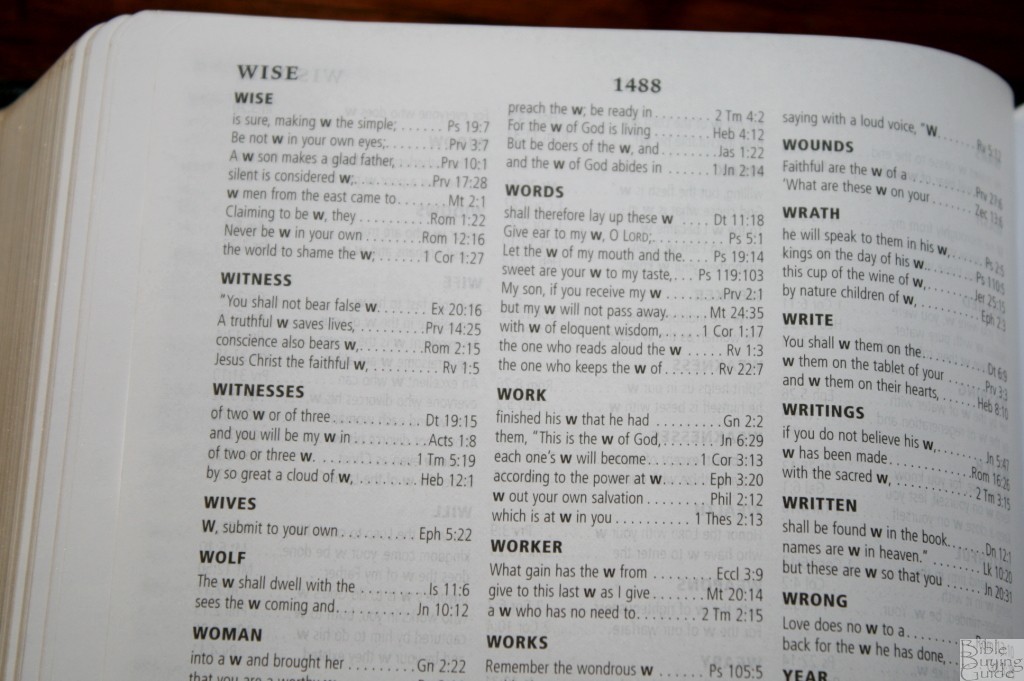
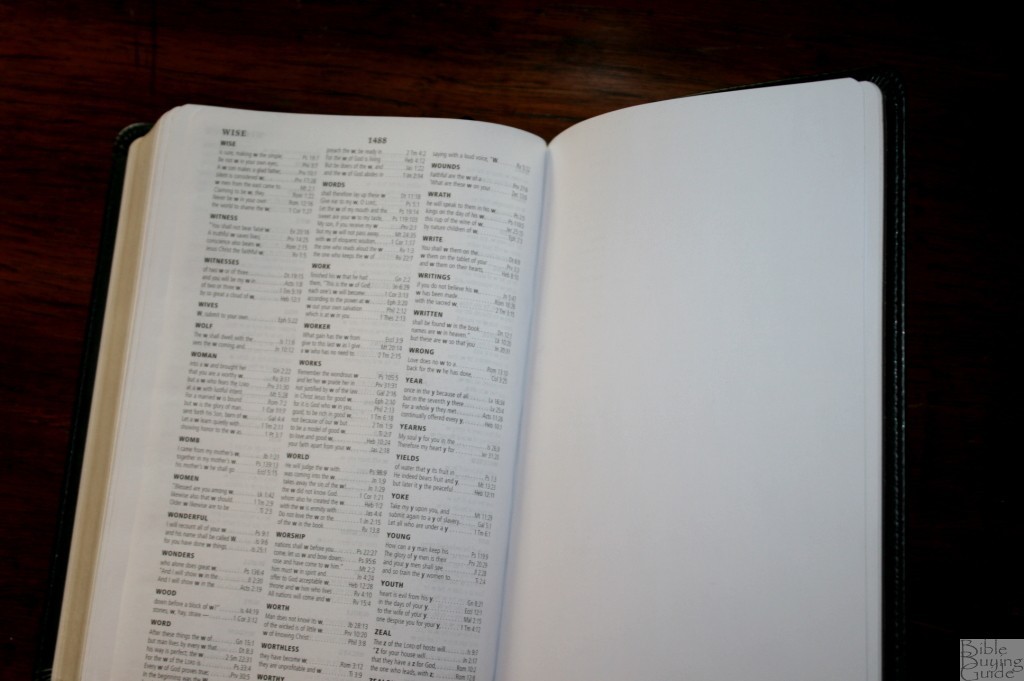
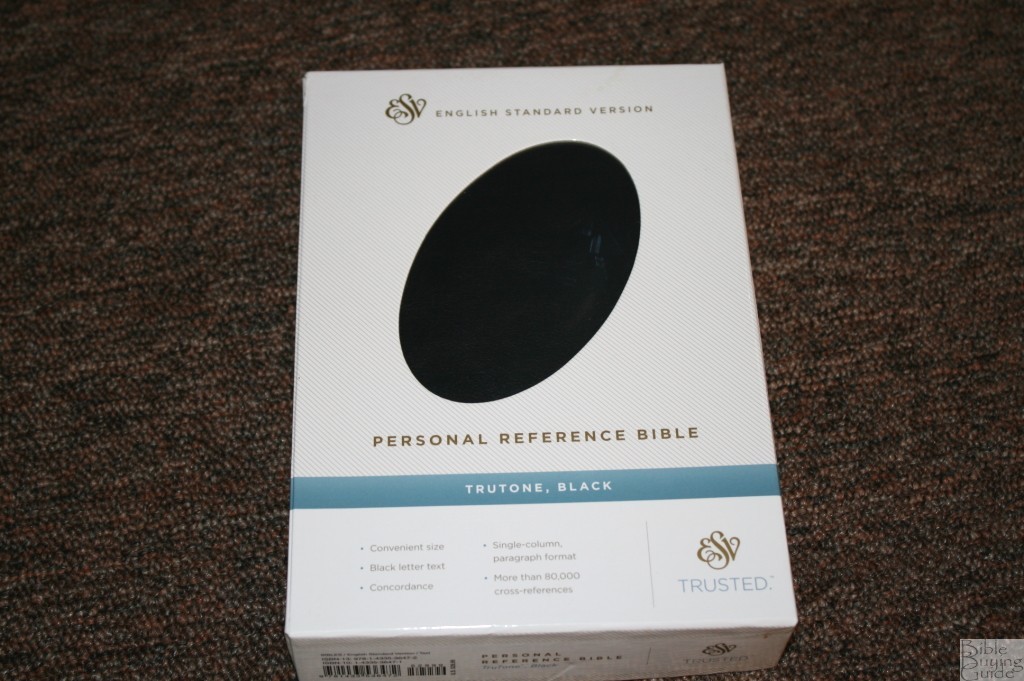


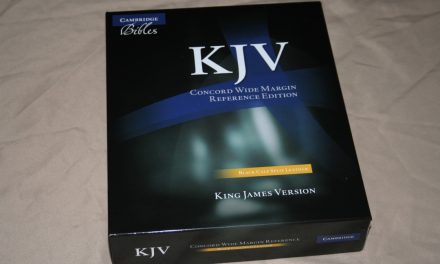
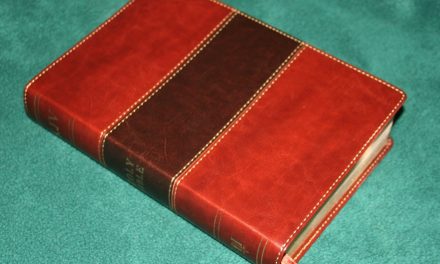
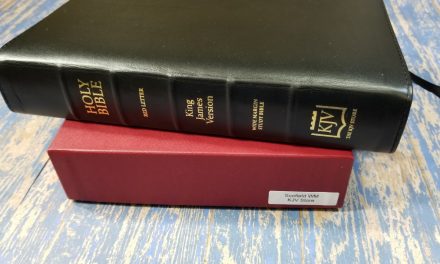
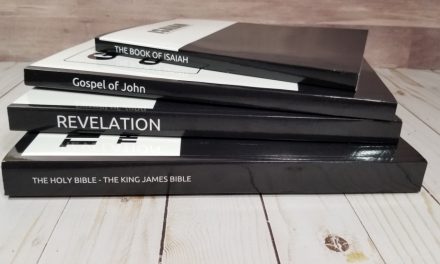





Randy, Thank you for this review. The cheapest copy of this edition of the ESV, along with the software copy of the ESV edition of the Thompson Chain Reference Bible (which also you have reviewed), make an affordable and formidable combination!
Not bad for $13.99. I have one and just started using it after not giving it much attention for a couple months. The pages came stuck together from the gilding, but once I took care of that I fell in love with it. The cover is much nicer than some of the other TruTone bibles I own, probably due to the grain as I imagine the material itself is the same.